Mycoplasma PCR Detection Kit
Undoubtedly, PurMa Biologics is the pioneering company in both mycoplasma detection and elimination reagents. Moreover, PurMa™ Mycoplasma PCR Detection Kit is fast, easy to use, highly accurate kit. Additionally, the kit contains a 2X green master mix .
Description
Background
Undoubtedly, PurMa Biologics is the pioneering company in both mycoplasma detection and elimination reagents. Moreover, PurMa™ Mycoplasma PCR Detection Kit is fast, easy to use, highly accurate kit. The kit contains a 2X green master mix and needs just 1-2µl of your sample to be tested.
PurMa™ Mycoplasma PCR Detection Kit (50 Reactions) Cat # P5M011404-50 Contents
- PurMaTM PCR 2X Mix (containing green dye, no need for loading dye includes all the primers) (700 µl)
- It also contains reaction buffer (2500µl)
- More importantly, Positive control. The lysed mycoplasma which does not carry any live mycoplasma (50ul)
- Negative Control. Lysed COS1 cells serves as the negative control (mycoplasma free), ready to proceed to the PCR and (50µl).
- Lastly, PurMa™ Ultra-Pure Nuclease Free Water (Cat# P3W013104) (1ml)
To gain the best results, please strictly follow the guidance: Protocol
Mycoplasma Contamination
Contamination with mycoplasma does not cause turbidity or obvious changes in cell culture media, therefore is under-looked in many laboratories.
Although, to date, more than 190 mycoplasma species have been reported, it is eight species that account for more than 95% of all mycoplasma contamination in cell culture, including: M. arginini (bovine), M. fermentans (human), M. hominis (human), M. hyorhinis (porcine), M. orale (human), M. pirum (human), M. salivarium (human), and Acholeplasma laidlawii (bovine).
Our sophisticated PurMa™ Mycoplasma PCR Detection Kit not only detects the mycoplasma in your cell culture system, but also determines the exact mycoplasma strain is the cause of contamination.
Consequences of contamination with mycoplasma
- Gradual deterioration of the cell line, which is especially significant in stable cell lines (15-35%)
- Inconsistency among the results and much higher standard deviations in your statistical analysis.
- Altering DNA, RNA, and protein synthesis.
- Diminishing amino acid and ATP levels.
- Chromosomal alterations.
- Modifying host-cell immune system.
Mycoplasma contamination can happen in various ways
- Faulty laboratory equipment. (For Instance: a dysfunctioning laminar flow could let mycoplasma-containing dust in the biosafety cabinet, thereby causing contamination of all of the media and cells within.)
- Inadequate culturing techniques, human breath contains several major mycoplasma including M. fermentans which count for the majority of cell culture contamination (45%). %). Wearing a mask is absolutely needed while working in a cell culture lab, especially when checking cells under microscope.
- Getting a cell line from another laboratory may introduce Mycoplasma contamination.
Mycoplasma can affect the phenotypic and functional characteristics of cells In Vitro
Including:
- Chromosomal aberrations
- Disruption of nucleic acid synthesis
- Changes in membrane antigenicity
- Inhibition of cell proliferation and metabolism
- Decreased transfection rates
- Changes in gene expression profiles
- Affects virus production.
- Cell death
Special Features
- PurMaTM Mycoplasma PCR Detection Kit is Easy to Use
- The procedure is fast and is completed within 2 hrs.
- Our kit has high detection ability.
- Does not detect bacterial or animal sequences of DNA.
- PurMaTM Mycoplasma PCR Detection Kit detects the following species: A. Laidlawii, M. Arginine, M. Boris, M. Fermentans M. Hominis, M. Hyorhinis and M. Orale
- PurMaTM Mycoplasma Detection Kit detects a 230 bp amplicon.
- The kit contains a 2X ready master mix containing all the primers and green dye (you would not need to add loading dye after amplification to tun the result on agarose gel) and needs only 1-2µl of your sample to be tested.
References
- Mycoplasma detection in cell culture by concomitant use of bisbenzamide and fluoresceinated antibody. Freiberg et al. In Vitro Cell Dev Biol. 1990 Jun;26(6):585-8.
- Mycoplasma detection by PCR analysis. Hopert et al. In Vitro Cell Dev Biol Anim. 1993 Oct;29A(10):819-21.
| Parameter | Specification |
| Appearance | Clear liquid/Green |
| pH | 7.4 ± 0.1 |
| Osmolality | 275-360 mOsm/L |
| Endotoxin | NMT< 2EU/mL |
| Mycoplasma | Negative |
| Suitability | Suitable for mammalian cell culture |
| Indicator | NA |
| Sterility Tested | Sterile filtered using 0.1 µm filter |
| Form | Liquid |
| Shipping Condition | Dry Ice |
Additional information
| Reaction Size | 50 Reactions, 100 Reactions |
|---|
39 reviews for Mycoplasma PCR Detection Kit
Only logged in customers who have purchased this product may leave a review.

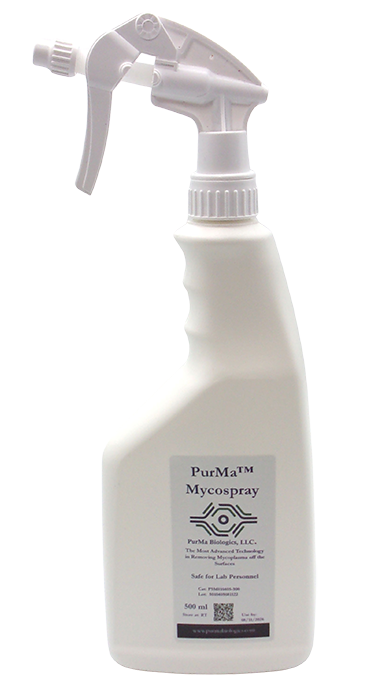
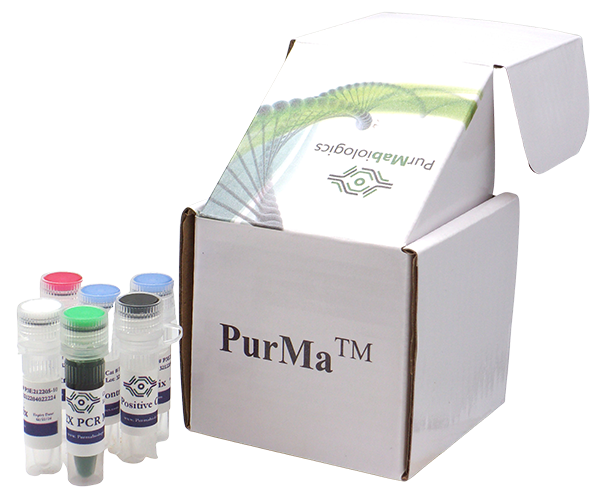
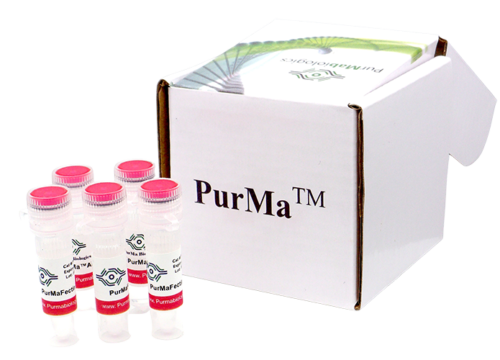
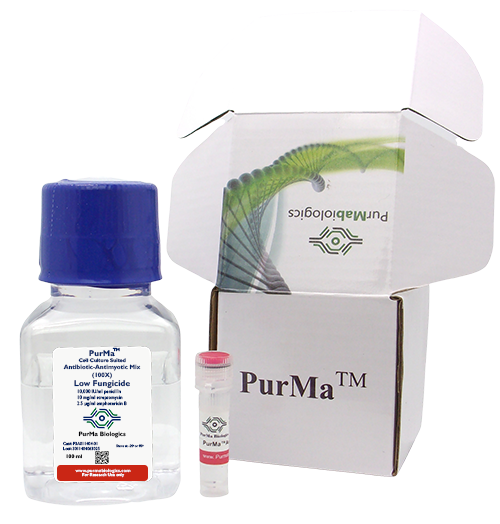
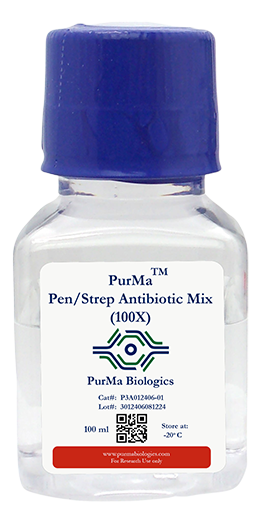

azadi@live.ca –
Review: we have purchased Lipid Depleted FBS , DMEM F12 …. they were good quality and decent price
Have you purchased: Yes
Time of submission: 29-Jan-2025 23:10:30
Ease of placing the order: 5/5
Anonymous –
Review:
Have you purchased:
Time of submission: 21-Feb-2025 15:30:00
Ease of placing the order: ‘not given’
Gregory-Mullen@ouhsc.edu –
Review: We buy *all* of our cell culture media, fetal bovine sera, and lipid-depleted sera from PurMa. The quality of their reagents is absolutely top-notch, giving us reliable, repeatable results in our experiments. We highly recommend PurMa!
Have you purchased: Yes
Time of submission: 21-Feb-2025 15:46:22
Ease of placing the order: 5/5
Anonymous –
Review:
Have you purchased:
Time of submission: 24-Feb-2025 13:50:14
Ease of placing the order: ‘not given’
lrothblu@ouhsc.edu –
Review: Serum worked beautifully. Cells grew well and had their usual cycle time. Tissue culture medium also worked very well.
Have you purchased: It is my first Purchase
Time of submission: 24-Feb-2025 13:53:22
Ease of placing the order: 5/5
Anonymous –
Review:
Have you purchased:
Time of submission: 27-Feb-2025 17:42:44
Ease of placing the order: ‘not given’
Anonymous –
Review:
Have you purchased:
Time of submission: 05-Mar-2025 16:31:44
Ease of placing the order: ‘not given’
michael-rudolph@ouhsc.edu –
Review: I have worked directly with PurMa biologics on a number of projects ongoing in my lab. I find the media and the specialty Lipid Depleted Serum to be high quality and very consistent among batches, which is critical to our adipogenesis projects using primary stem cells. Also, the service from PurMa is outstanding for my lab.
Have you purchased: Yes
Time of submission: 05-Mar-2025 16:35:21
Ease of placing the order: 5/5
Anonymous –
Review:
Have you purchased:
Time of submission: 05-Mar-2025 17:29:13
Ease of placing the order: ‘not given’
Anonymous –
Review:
Have you purchased:
Time of submission: 10-Mar-2025 14:32:38
Ease of placing the order: ‘not given’
jkurien@hausbio.com –
Review: We have been working with PurMa biologics for the past several years , we buy cell culture related media like DMEM F12 and EMEM and Fetal Bovine Serum . We appreciate the high quality and reasonable price, and great customer service.
Have you purchased: Yes
Time of submission: 12-Mar-2025 12:34:09
Ease of placing the order: 5/5
hyeungk1968@gmail.comthe –
Review: I used Lipid Free horse serum of PurMa Biologics.
The quality is great!
Have you purchased: Yes
Time of submission: 17-Mar-2025 12:09:58
Ease of placing the order: 5/5
jaya-krishnan@omrf.org –
Review: I started my lab using the regular Gibco media components. We have shifted to Purma past 6 months and see no difference in the quality of our cell culture. Simply saying that Purma is cheaper, quicker to deliver and as good as Gibco. The best part was that Purma customized several media for our fish cell lines which was really helpful. Lastly, Seif walked through the customization of media over Zoom, that gave a lot of confidence for using those media solutions.
Have you purchased: Yes
Time of submission: 17-Mar-2025 14:22:58
Ease of placing the order: 4/5
tayyab-afzal@omrf.org –
Review: We bought Premium FBS and DMEM cell culture media from PurMa Biologics. We are using them for several mammalian cell line and primary cell culture and the cell growth is perfectly fine. We are totally satisfied with the product quality. Importantly as local vendor, we can have the product available as per our demand ASAP.
Have you purchased: Yes
Time of submission: 18-Mar-2025 10:01:50
Ease of placing the order: 5/5
Fitzkr@gmail.com –
Review: We purchase everything we need related to cell and tissue culture from PurMa, reagents like: DMEM, LL15, EMEM, FBS, trypsin, antibiotics mix100X and…
Always great quality, fast processing and shipping.
We are totally satisfied.
Have you purchased: Yes
Time of submission: 22-Mar-2025 10:47:00
Ease of placing the order: 5/5
vmadka@ouhsc.edu –
Review:
Have you purchased: Yes
Time of submission: 24-Mar-2025 15:02:40
Ease of placing the order: 4/5
Anupam-Mandal@ouhsc.edu –
Review: Excellent
Have you purchased: Yes
Time of submission: 24-Mar-2025 15:05:43
Ease of placing the order: 5/5
rohan-varshney@ouhsc.edu –
Review: Reliable and dependable products. We purchased lipid-depleted FBS (LD-FBS) from PurMa Biologics and it worked great. We cross-checked the lipid content in the serum by GC-MS and Triglyceride assay and as advertised, did not find any lipids in the FBS.
Have you purchased: Yes
Time of submission: 24-Mar-2025 15:06:38
Ease of placing the order: 5/5
Surendra-Shukla@ouhsc.edu –
Review: Very fast, efficient, and economic service. Great for new PIs like me.
Have you purchased: Yes
Time of submission: 25-Apr-2025 14:00:04
Ease of placing the order: 5/5
vmadka@ouhsc.edu –
Review:
Have you purchased: Yes
Time of submission: 24-Mar-2025 15:02:40
Ease of placing the order: 4/5
Anupam-Mandal@ouhsc.edu –
Review: Excellent
Have you purchased: Yes
Time of submission: 24-Mar-2025 15:05:43
Ease of placing the order: 5/5
anil-singh@ouhsc.edu –
Review: NA
Have you purchased: Yes
Time of submission: 25-Mar-2025 10:11:14
Ease of placing the order: 5/5
Surendra-Shukla@ouhsc.edu –
Review: Best quality products, best price.
Have you purchased: Yes
Time of submission: 18-Apr-2025 09:51:03
Ease of placing the order: 5/5
madhusmita-rout@ouhsc.edu –
Review:
Have you purchased: Yes
Time of submission: 21-Apr-2025 11:15:46
Ease of placing the order: 5/5
alexholloway@mesogen.com –
Review: This serum appears to be a high quality product and worked well for our needs. Purma has an extensive catalog for cell culturing supplies which we are glad we came across.
Have you purchased: It is my first Purchase
Time of submission: 24-Apr-2025 16:54:29
Ease of placing the order: 5/5
jkurien@hausbio.com –
Review: We have been working with PurMa biologics for the past several years , we buy cell culture related media like DMEM F12 and EMEM and Fetal Bovine Serum . We appreciate the high quality and reasonable price, and great customer service.
Have you purchased: Yes
Time of submission: 12-Mar-2025 12:34:09
Ease of placing the order: 5/5
lrothblu@ouhsc.edu –
Review: Serum worked beautifully. Cells grew well and had their usual cycle time. Tissue culture medium also worked very well.
Have you purchased: It is my first Purchase
Time of submission: 24-Feb-2025 13:53:22
Ease of placing the order: 5/5
hyeungk1968@gmail.comthe –
Review: I used Lipid Free horse serum of PurMa Biologics.
The quality is great!
Have you purchased: Yes
Time of submission: 17-Mar-2025 12:09:58
Ease of placing the order: 5/5
jaya-krishnan@omrf.org –
Review: I started my lab using the regular Gibco media components. We have shifted to Purma past 6 months and see no difference in the quality of our cell culture. Simply saying that Purma is cheaper, quicker to deliver and as good as Gibco. The best part was that Purma customized several media for our fish cell lines which was really helpful. Lastly, Seif walked through the customization of media over Zoom, that gave a lot of confidence for using those media solutions.
Have you purchased: Yes
Time of submission: 17-Mar-2025 14:22:58
Ease of placing the order: 4/5
michael-rudolph@ouhsc.edu –
Review: I have worked directly with PurMa biologics on a number of projects ongoing in my lab. I find the media and the specialty Lipid Depleted Serum to be high quality and very consistent among batches, which is critical to our adipogenesis projects using primary stem cells. Also, the service from PurMa is outstanding for my lab.
Have you purchased: Yes
Time of submission: 05-Mar-2025 16:35:21
Ease of placing the order: 5/5
tayyab-afzal@omrf.org –
Review: We bought Premium FBS and DMEM cell culture media from PurMa Biologics. We are using them for several mammalian cell line and primary cell culture and the cell growth is perfectly fine. We are totally satisfied with the product quality. Importantly as local vendor, we can have the product available as per our demand ASAP.
Have you purchased: Yes
Time of submission: 18-Mar-2025 10:01:50
Ease of placing the order: 5/5
Fitzkr@gmail.com –
Review: We purchase everything we need related to cell and tissue culture from PurMa, reagents like: DMEM, LL15, EMEM, FBS, trypsin, antibiotics mix100X and…
Always great quality, fast processing and shipping.
We are totally satisfied.
Have you purchased: Yes
Time of submission: 22-Mar-2025 10:47:00
Ease of placing the order: 5/5
Gregory-Mullen@ouhsc.edu –
Review: We buy *all* of our cell culture media, fetal bovine sera, and lipid-depleted sera from PurMa. The quality of their reagents is absolutely top-notch, giving us reliable, repeatable results in our experiments. We highly recommend PurMa!
Have you purchased: Yes
Time of submission: 21-Feb-2025 15:46:22
Ease of placing the order: 5/5
azadi@live.ca –
Review: we have purchased Lipid Depleted FBS , DMEM F12 …. they were good quality and decent price
Have you purchased: Yes
Time of submission: 29-Jan-2025 23:10:30
Ease of placing the order: 5/5
Ravi-Gor@ouhsc.edu –
Review: I recently had the pleasure of interacting with Dr. Seif Azadi, and I want to express my gratitude for his expertise and timely assistance. His knowledge and dedication were instrumental in addressing our lab’s needs efficiently.
Have you purchased: It is my first Purchase
Time of submission: 25-Jun-2025 12:00:09
Ease of placing the order: 5/5
xiangpeng-li@ou.edu –
Review: PurMa helped us with the customized medium. They are professional and friendly. I appreciate their great work.
Have you purchased: Yes
Time of submission: 14-Aug-2025 12:59:31
Ease of placing the order: 5/5
jianhua.song@appliedstemcell.com –
Review: it is reliable vendor!
Have you purchased: Yes
Time of submission: 07-Oct-2025 17:14:12
Ease of placing the order: 5/5
Zhenghui.Liu@appliedstemcell.com –
Review: We always buy our agarose from PurMa and have never been disappointed.
Have you purchased: Yes
Time of submission: 08-Oct-2025 11:17:53
Ease of placing the order: 5/5
ravi-gor@ou.edu –
Review: I recently had the pleasure of interacting with Dr. Seif Azadi from Purma Biologics, and I cannot thank him enough for his expertise and prompt assistance. His deep knowledge and dedication were instrumental in meeting our laboratory’s needs with remarkable efficiency.
We ordered FBS, DMEM, and Trypsin from Purma Biologics, and I’m thrilled to report that all the products have performed exceptionally well. They consistently deliver reproducible results, significantly enhancing the reliability of our experiments.
Thank you, Team Purma Biologics, for your good products and support!
Have you purchased: It is my first Purchase
Time of submission: 23-Oct-2025 17:30:25
Ease of placing the order: 5/5